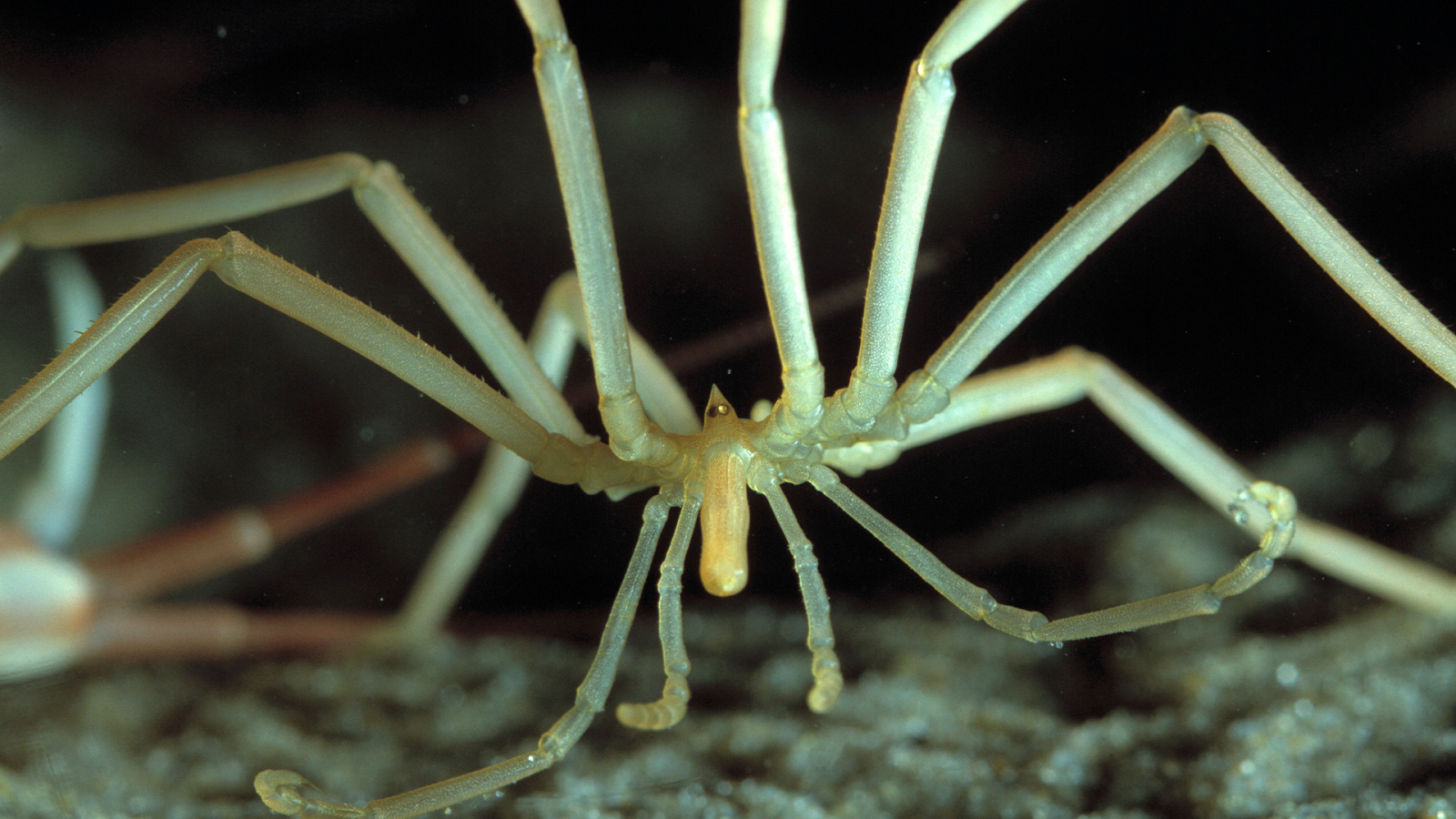Secrets of giant Antarctic sea spiders and their tiny eggs revealed after 140 years
Unlike other sea spiders that carry their eggs on their backs, male giant antarctic sea spiders spend two days gluing their eggs to the seafloor.
Scientists have finally resolved a 140-year-old mystery about how giant Antarctic sea spiders look after their eggs. Unlike other sea spiders that carry their eggs around until they hatch, the giant Antarctic sea spider (Colossendeis megalonyx) attach their thousands of tiny eggs to the rocky seafloor, a new study finds.
Sea spiders are marine arthropods that live in oceans around the world. They have eight extremely long, thin legs that make them resemble, but are not related to terrestrial daddy longlegs spiders (family Pholcidae).
Many sea spiders only grow to up to an inch long, but those that live at the poles, like C. megalonyx, can have leg spans of up to 20 inches (51 centimeters) — a phenomenon known as "polar gigantism" because they are much larger than sea spiders in warmer climates.
Related: Newly discovered Antarctic sea spider with 'boxing glove' claws pulled up from ocean floor
Sea spiders are among the few marine arthropods whose males exclusively care for their offspring. "In most sea spiders, the male parent takes care of the babies by carrying them around while they develop," Amy Moran, lead author of the new study and professor at the University of Hawai'i's School of Life Sciences at Manoa, said in a statement. While research into the reproductive strategies of sea spiders goes back 140 years, Moran said, the brooding behavior of three of the 11 recognized families of sea spiders has never been observed, including the family of C. megalonyx (Collossendeidae).
To determine how these sea spiders look after their eggs, divers entered the icy waters of McMurdo Sound in Antarctica and hand-collected C. megalonyx individuals that appeared to be in mating groups — identified by individuals stacked on top of each other. The pairs were then transported to the research facility McMurdo Station, where they were kept in tanks so their behavior could be observed, according to the study, published on Feb. 11 in the journal Ecology.

Two separate mating pairs ended up laying thousands of eggs at the bottom of the tank. However, rather than carrying the eggs around like other sea spiders do, one parent, likely the male, spent two days attaching the cloud-like brood to the floor of the tank.
Sign up for the Live Science daily newsletter now
Get the world’s most fascinating discoveries delivered straight to your inbox.
After a few weeks, the eggs appeared to be covered in algae, which made them difficult to see within the tank. In the wild, overgrown algae could help camouflage these eggs against the seafloor.
"We were so lucky to be able to see this," study co-author Ming Wei Aaron Toh, a doctoral student in the School of Life Sciences at the University of Hawai'i at Mānoa, said in the statement. "The opportunity to work directly with these amazing animals in Antarctica meant we could learn things no one had ever even guessed."

Elise studied marine biology at the University of Portsmouth in the U.K. She has worked as a freelance journalist focusing on the aquatic realm. Elise is working with Live Science through Future Academy, a program to train future journalists on best practices in the field.











